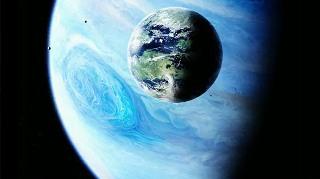
LONDON (PTI): Moons, rather than planets, may provide us the first glimpse of habitable worlds outside our solar system, scientists claim.
Researchers believe imaging exomoons could offer unprecedented clues to their ability to support life by providing the chemical signatures carried in their light.
"If we can direct-image them, we can take their spectra, which means we can determine what sort of molecules are in their atmosphere," the New Scientist quoted Mary Anne Peters of Princeton University as saying.
Scientists, until now, have discovered over 800 planets outside our solar system, or exoplanets, using indirect methods, such as picking up the dimming of a star's light when a planet passes in front of it.
Spectra from rocky planets similar in size to Earth have been tough to collect with these methods. The planetary photo album is even slimmer: only 4 systems have been imaged.
The problem is that stars are bright whereas planets are dim, so a planet has to be far enough from its star to avoid being outshined.
This means those worlds that have been imaged orbit outside the habitable zone, the region around a star that's warm enough for liquid water, researchers said.
Planets shining bright enough to appear in pictures must be glowing from the heat of formation and so are too young to host life, they said.
But if a moon orbits a mature gas giant akin to Jupiter, the planet's gravitational pull might be constantly kneading and stretching the moon, keeping its interior molten.
This process, called tidal heating, is known to fuel the furnace of Jupiter's moon Io, the most volcanically active body in our solar system. With tidal heat, an exomoon should shine in pictures.
"In a sense, what we're saying is that there's a way to keep warm other than starlight. This will let us directly image moons in planetary systems even when we can't see the planet," said Edwin Turner, also from Princeton.
To test this idea, Turner and Peters calculated how hot a Moon would have to be for current telescopes to see it.
They found that most of today's observatories - such as the Keck telescope in Hawaii or the space-based Hubble and Spitzer telescopes - should be able to image them, but only if the Moons are around a searing 700 degree C.
Scientists, however, hope that future telescopes will have the sensitivity to pick up moons at a much more life-friendly temperature.
 Previous Article
Previous Article Next Article
Next Article













The Indian Air Force, in its flight trials evaluation report submitted before the Defence Ministry l..
view articleAn insight into the Medium Multi-Role Combat Aircraft competition...
view articleSky enthusiasts can now spot the International Space Station (ISS) commanded by Indian-American astr..
view article